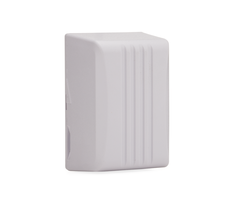Honeywell 5877 Garage Door Relay Discontinued
PostedUpdate! Although this product has been discontinued and will no longer be manufactured, Alarm Grid has managed to obtain a small amount of stock, so the 5877 is currently still available for purchase on our site, but for a limited time.
We have learned that the Honeywell 5877 Garage Door Relay has been discontinued, effective immediately. This leaves the Honeywell Lyric and the Honeywell LYNX Touch Panels with no viable option for a smart garage door controller. The associated Honeywell GDCK Kit is also discontinued.
 The Honeywell 5877 was widely seen as one of the most important automation accessories for the Lyric and LYNX Touch Systems. Thanks to this module, a user could integrate their garage door motor with their wireless Honeywell Alarm System and the Total Connect 2.0 platform. This allowed users to open and close their garage doors from anywhere using TC2, and they could also use the platform to check its current OPEN or CLOSED status when a separate garage door sensor was used. Users could also include their garage doors with smart scenes for automatic operation based on a schedule or with predetermined events.
The Honeywell 5877 was widely seen as one of the most important automation accessories for the Lyric and LYNX Touch Systems. Thanks to this module, a user could integrate their garage door motor with their wireless Honeywell Alarm System and the Total Connect 2.0 platform. This allowed users to open and close their garage doors from anywhere using TC2, and they could also use the platform to check its current OPEN or CLOSED status when a separate garage door sensor was used. Users could also include their garage doors with smart scenes for automatic operation based on a schedule or with predetermined events.
With the 5877 being discontinued, there is no longer a viable method for setting up a Lyric or LYNX Touch System for local garage door control. The decision by Resideo to discontinue the Honeywell 5877 does not strike us as a big surprise. An increasing number of users have been finding good alternatives to the 5877 lately. One example is the Chamberlain and LiftMaster Integration for Total Connect 2.0. While this server-to-server integration does not allow for local control of the garage door at the security panel, being able to control the garage door remotely from TC2 is considered by most users to be more important. You can learn more about that integration here. The 5877 also has a big limitation, in that it does not work with the increasingly popular LiftMaster MyQ Garage Motors.
It is also important to note that the Lyric and LYNX Touch Systems are not compatible with most third-party Z-Wave garage door openers. This somewhat forced Lyric and LYNX Touch users to go with the first-party 5877 device from Resideo, rather than buying a third-party device that they do not manufacture. But the game has been changed with the newest Resideo System, the Honeywell Home PROA7PLUS. This new system offers a much wider selection of possible integrations. For example, Alarm Grid offers the popular GoControl GD00Z-8-GC Z-Wave Plus Garage Door Opener, which is often used with various Alarm.com Security Panels. That unit works with the PROA7PLUS, but not the Lyric and LYNX Touch Systems. The bottom line is that fewer people were buying the Honeywell 5877, and Resideo decided it was no longer in their best interest to continue manufacturing it.
Of course, the unfortunate result of this is that the Lyric and LYNX Touch Panels do not have a good option for smart garage door control. If you have an existing Honeywell 5877 Module, then it will continue to work fine. Or if you find a used one somewhere, then that should also be okay for setting up new service. The other components of the Honeywell GDCK Kit are still available, including the Honeywell 5822T for monitoring a garage door's current status. But if you were in the market for a new 5877 for an existing Lyric or LYNX Touch, then we are sorry to say that you are out of luck. You should try finding a used model if possible, or you may consider upgrading to a newer alarm system.
This truly represents the end of an era, as the Honeywell 5877 was a mainstay accessory for the longest time. But all good things must come to an end. If you have any questions about the discontinued 5877, or if you need help integrating your alarm system with your garage door, then please email us at support@alarmgrid.com. Being able to control your garage door remotely is a great perk of alarm monitoring service, and we are here to help you explore your remaining options. Our team is here to answer your questions from 9am to 8pm ET M-F. We look forward to hearing from you!












 Before we get into general door contacts that would be used for most applications, we want to make special mention of some more unique sensors that would be used for specific setups.
Before we get into general door contacts that would be used for most applications, we want to make special mention of some more unique sensors that would be used for specific setups. 